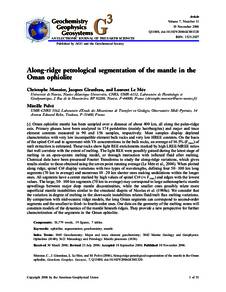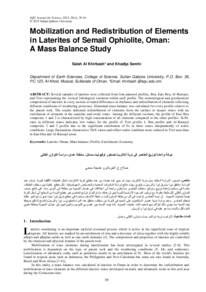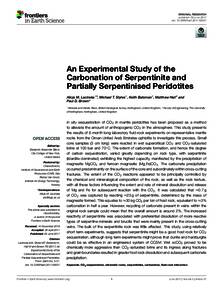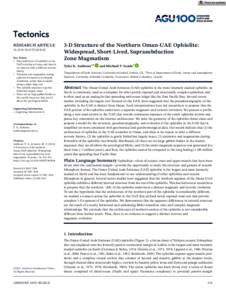Document
Along-ridge petrological segmentation of the mantle in the Oman ophiolite.
Identifier
DOI: 10.1029/2006GC001320
Contributors
Publisher
AGU and the Geochemical Society.
Gregorian
2006-11
Language
English
English abstract
Oman ophiolite mantle has been sampled over a distance of about 400 km, all along the paleo-ridge axis. Primary phases have been analyzed in 174 peridotites (mainly harzburgites) and major and trace element contents measured in 90 and 156 samples, respectively. Most samples display depleted characteristics with very low incompatible element bulk rocks and very low HREE contents. On the basis of the spinel Cr# and in agreement with Yb concentrations in the bulk rocks, an average of 16.5% (Fmax) of melt extraction is estimated. These rocks show light REE enrichments marked by high LREE/MREE ratios that well correlate with the extent of melting. The light REE were possibly gained during the latest stage of melting in an open-system melting model, or through interaction with influxed fluid after melting. Chemical data have been processed Fourier Transforms to study the along-ridge variations, which gives results similar to those obtained using the seven point running average (Le Mée et al., 2004). When plotted along ridge, spinel Cr# display variations with two types of wavelengths, defining four 50-100 km long segments (70 km in average) and numerous 10-20 km shorter ones making undulations within the longer ones. All segments have a center marked by high values of spinel Cr# (≈F max) and edges with the lowest values. The large, 50-100 km segments (70 km in average) may correspond to large asthenospheric mantle upwellings between major deep mantle discontinuities, while the smaller ones possibly relate more superficial mantle instabilities similar to the structural diapirs of Nicolas et al. (1988a). We consider that the variation in degree of melting in the short-scale instabilities relates fluid/melt flux melting variations. By comparison with mid-oceanic ridge models, the long Oman segments can correspond to second-order segments and the smallest to third- to fourth-order ones. Our data on the geometry of the melting zones will constrain models of the dynamics of the mantle beneath ridges. They provide a new perspective for further characterization of the segments in the Oman ophiolite.
Member of
ISSN
1525-2027
Resource URL
Category
Journal articles




